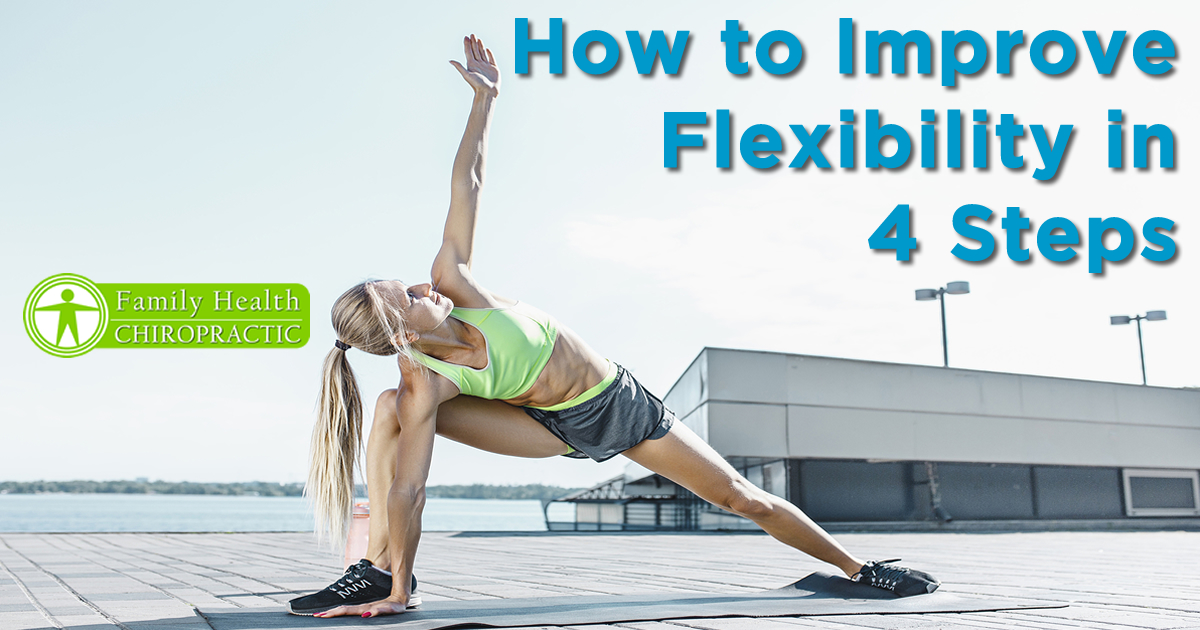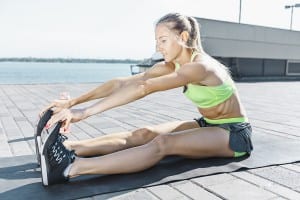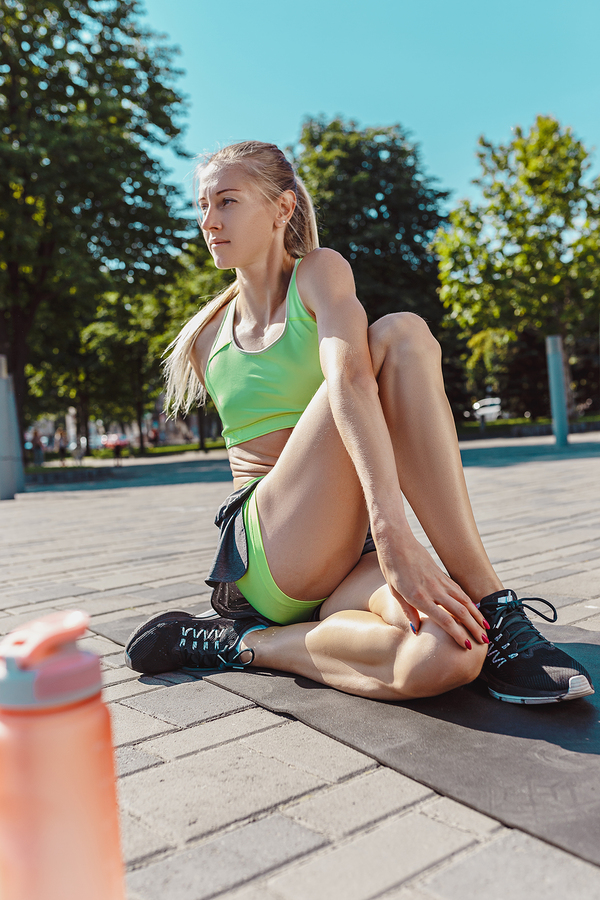“I've never been flexible.” is probably the most common thing I hear when assessing someone's flexibility.
That's not an excuse to not be able to get into certain positions.
You're a human being with an amazing capacity to move and you're in my office because you have some sort of
- discomfort,
- dysfunction
- or dis-ease
…and the foundation of getting better all rests on FLEXIBILITY.
Most people wish they were more flexible but don't do anything about it because it feels weird or they have absolutely no clue what to do.
We fold ourselves into painful positions, nearly passing out while trying to restrain from passing gas or snapping in two.
Do that every day for a few months until you are 100% convinced it didn't work and then go back to just accepting the fact that you're going to be TIGHT, SORE or RESTRICTED just like you've always been.
Does that sound familiar?
I've been a Chiropractor and movement specialist for over a decade and in my experience most people certainly want to be more flexible, but hate training for it (or simply don't do it).
The actual “trick” to getting more flexible is to focus on the areas YOU PERSONALLY need to work on, and then train with the most efficient tools to get there.
In this article, I hope to layout four simple steps that I personally recommend to improve your flexibility… without having to sh!t yourself doing it.
Start With “WHY”
Its' universal.
Most people who want to “get in shape”, start exercising or improve personal fitness will start with some sort of flexibility movement (stretching).
But WHY? …because that's what everyone else has always done?
If that's the case, it's not a good enough reason.
If you're already getting through your day and your recreational activities without sensations of stiffness or tightness in your muscles, then you probably don't have to make flexibility training your top priority.
But… if you do feel stiffness and tightness and cannot put your socks and shoes on in the morning without sounding like you're having a baby or hitting your max heart rate in under 60 seconds, then flexibility training is something you NEED.
How to Improve Flexibility in 4 Steps
The most important thing to think about when it comes to flexibility is that the body reacts to the SAID principle.
Specific Adaptations to Imposed Demands.
This means that when certain stimuli are applied to the body, it will adapt accordingly to maintain homeostasis.
For example: Resistance or Weight Training will cause your body to react to the “imposed demand” (lifting weights) by “specifically adapting” and increasing bone density, improving connective tissue integrity (tendons, ligaments, muscles) and gaining neurological adaptions that improve overall health.
If you have “poor” flexibility and you move your body into what is generally assumed to be “good” flexibility, you may find it uncomfortable because your body has adapted to your poor use or positioning.
That said, we are all very different in the activities that we do daily… so rather than having you go through 45 minutes of stretching and wasting your time with cookie-cutter routines… follow these steps:
Step 1 – Figure Out Your Flexibility Needs
First of all, let’s go back to WHY.
There are a lot of reasons as to why you should stretch. The main reasons include:
- Decreasing muscle soreness after a workout
- Decreasing risk of injury
- Improving performance
- Improving range of motion
- Reducing pain
That said, there's actually a fair amount of evidence to suggest that stretching can be more harmful than good.
But sleeping can be bad for you… if you're in a tub.
And eating is also bad for you… if it's poison.
In fact anything is bad for you if its done the wrong way.
My position on stretching is that “if you cannot move into a position you’d like to be in, then you need to find a way to get to that range of motion to prevent harm.”
That's all there is to it.
So how do you know if you need to stretch?
- If you're lifting weights overhead and you cannot keep your arms straight above you… you need to stretch.
- If you cannot put your socks or shoes on without having to kneel… you need to stretch.
- If you want to play with your kids but you have trouble getting down on the floor because you’re too tight, then you need to stretch.
Whatever the case may be, what is important here is to figure out what is your motivation, what are the things you want to do in life but can't because your movement is limiting you?
Find your own personal reason, as that will get you to your objective much quicker and take you much further than some other contrived justification.
Step 2 – What Exactly Is Holding You Back?
Once you have a goal in mind, the next step is to actually figure out what is keeping you from achieving it.
This goes way beyond simple saying, “Oh… I just have to stretch out more.”
Yes you probably do, but do you know which muscles you need to stretch?
All of them? There are 650 skeletal muscles in the human body – that would take forever!
Most people have a difficult time bending forward to touch their toes, and the common assumption is that they need to stretch their hamstrings, but there are quite a few other things that could be acting as restrictors including your low back, hip flexors, glutes, ankles, etc.
This is why a good movement assessment is important.
The best way I’ve found to do that is to go through a series of targeted positions that test your whole body, and to note where you feel most restricted.
These movements or positions can include:
- Standing Squat
- Ankle Dorsiflexion
- Supine Hip/Knee Flexion
- Toe Touch Test
- Prone Heel to Butt Test
The idea is to start with the most noticeable restrictions and once you get those parts moving better, you'll likely see other areas of your body improving.
Think of this as untangling a rope – once you get through a primary knot or two, the rest simply unravels.
Step 3 – Getting Flexible Fast, Starts Slowing Down?
The worst thing you can do is stretch to the point where you hurt yourself. In fact, this type of stretching is the fastest way to injury.
The reason why you cannot move into a certain position is because of “tightness” that is related to one or more of the following:
- Soft tissue scarring (actual structure adhesions that limit movement)
- Joint Dysfunctions (restrictions at the joint itself usually due to injuries or negligence)
- Muscle Tone (muscles that are resisting movement due to overexertion)
The first two factors mentioned above are best seen by a licensed practitioner who can handle these types of conditions.
Muscle tone however is something that everyone can improve on themselves. They simply need to slow down.
It's obviously natural for someone to work their body harder and harder when they're wanting to get fit. This is great for pushing through and building stamina, but horrible for improving flexibility.
It's where athletes setup themselves up for harder gains.
Step 4 – Follow Your Plan Consistently
At this point you should be thinking about your personal goal in being flexible, identified your restrictions or at least have an idea of what needs to be worked on, and improved your approach to stretching by toning it down.
The last, but not least, thing to do is to follow a consistent plan of attack and do it as regularly as you can.
For example, there are sample routines for people that are stuck at a desk all day and want to counteract that posture and improve their hip and back flexibility, and then there are runners that need some extra work to keep their running technique perfect and efficient.
Those are just two different examples of the various plans that are made based on an individual’s personal situation.
The gains from this plan build up from session to session and that’s a matter of consistent practice and giving your body a chance to adapt to those gains.
Do you need an upper body or lower body movement assessment?
If you want to improve flexibility or learn more about what is limiting your body's movement, then consider scheduling a movement exam at our office.






